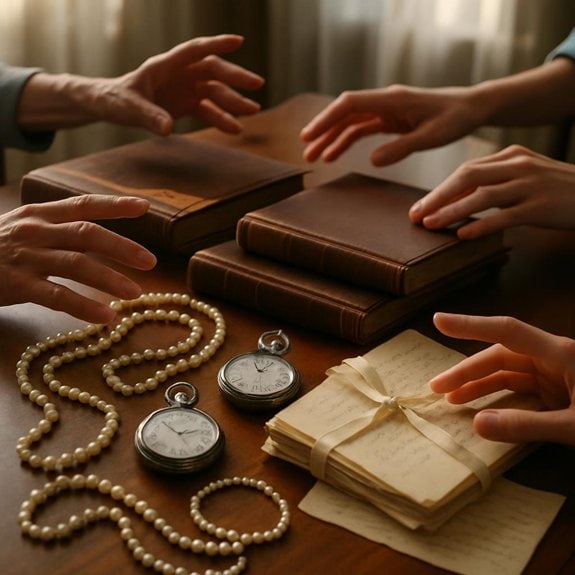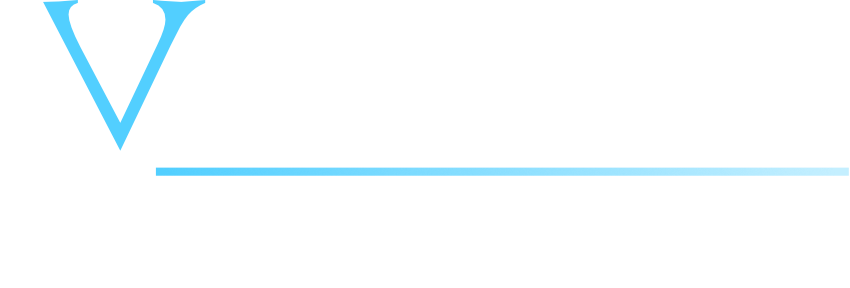
You will discover that personal effects—those tangible threads connecting generations—hold power beyond their material worth, transforming into battlegrounds where grief meets greed. When your will lacks specific instructions for your personal effects, you are leaving behind a minefield of competing interpretations and broken promises. Through deliberate documentation, clear bequests, and transparent communication with family members, you can preserve both cherished possessions and precious relationships. Understanding these strategies becomes your final act of love.
Understanding Articles and Personal Effects in BC Estate Law
Your grandmother’s jewelry box, that weathered leather case with its tarnished brass corners, represents more than mere adornment—it embodies the complex intersection of memory, value, and legal obligation that defines personal effects in estate law.
In British Columbia, these tangible possessions—from antique furniture to family photographs—carry dual significance: they are both legally recognized assets requiring proper distribution and irreplaceable vessels of personal history.
You will find that articles and personal effects encompass everything from vehicles and artwork to clothing and kitchen utensils, distinct from financial accounts or real property.
Understanding this category means recognizing how law intersects with emotion, where each item’s worth transcends monetary appraisal, touching the deeper currents of family legacy and remembrance that flow through every estate.
Common Disputes That Arise From Unclear Personal Effects Distribution
When siblings gather in their childhood home after a parent’s death, the dining room table where they once shared countless meals becomes a battlefield of competing claims and unspoken resentments.
You will witness how ambiguous language transforms cherished heirlooms into sources of bitter conflict. One child believes Mom’s verbal promise supersedes written instructions, while another clings to perceived fairness over legal documentation.
Without specific bequests, that antique clock marking decades of family time fractures relationships beyond repair. You will see executors caught between conflicting interpretations, their authority questioned at every turn.
These disputes reveal how grief amplifies misunderstandings, turning simple possessions into symbols of love withheld or favouritism exposed. Each contested item carries the weight of unresolved family dynamics, making distribution an emotional reckoning.
The Executor’s Authority and Limitations With Personal Belongings
As an executor steps into the sacred space between a loved one’s final wishes and their material legacy, you confront a paradox of power and constraint that defines estate administration.
Your authority extends only as far as the Will’s precise language allows, transforming you into both guardian and servant of documented intentions. You cannot bestow treasured heirlooms upon those unnamed in the will, regardless of whispered promises or assumed understandings.
Every personal effect carries weight beyond its physical form—legal implications ripple through estate valuations and residual distributions. Your role demands meticulous documentation through photographs and appraisals, while recognizing that each decision reverberates through family dynamics already tender with grief.
This delicate balance requires you to honour both law and legacy simultaneously.
Creating Specific Instructions for Individual Items in Your Will
The specific bequest transforms intention into inheritance, bridging the gap between your vision and your beneficiaries’ reality through the precision of written language.
When you craft instructions for individual items, you are not merely cataloging possessions—you are preserving memories and honouring relationships that transcend material value.
Consider each cherished object’s journey: your grandmother’s ring finding its way to your daughter’s hand, your father’s watch marking time on your son’s wrist.
Family heirlooms trace paths through generations, each object carrying memories from one loving hand to the next.
These deliberate choices demand clarity that leaves no room for interpretation or dispute. Name the item precisely, identify the recipient completely, and describe any conditions attached.
Through this meticulous process, you transform abstract wishes into concrete legacies, ensuring that each treasure reaches its intended guardian, carrying forward the stories and significance embedded within its form.
Using a Memorandum to Supplement Your Will’s Personal Effects Provisions
Beyond the formalities of your will lies a more flexible companion—the personal effects memorandum—offering you a living document that breathes with your changing relationships and evolving connections to cherished possessions.
This instrument stands at the intersection of legal precision and human fluidity, where your intentions can shift without requiring witnesses or formal amendments. You are granted the power to redistribute jewelry, artwork, and heirlooms as grandchildren mature or relationships deepen.
Yet this freedom carries profound responsibility—you must guarantee your memorandum exists before executing your will, describing it clearly enough that executors can identify it without question.
The memorandum becomes a bridge between rigid legal structures and the organic nature of human bonds, allowing your final wishes to honour life’s inevitable transformations.
Legal Requirements for Making a Memorandum Binding in British Columbia
If you have ever watched loved ones struggle over who gets grandmother’s jewelry or father’s vintage watch collection, you will understand why creating a legally binding memorandum for personal effects matters profoundly in your estate planning.
The legal architecture demands precision: your memorandum must be referenced explicitly within your will’s text, signed and dated by you, and stored alongside your original will.
These requirements transcend mere formality—they represent the careful preservation of your intentions, ensuring that treasured possessions find their rightful homes without igniting family discord that can echo through generations.
Best For: Individuals with valuable personal belongings or family heirlooms who want to ensure specific items go to designated beneficiaries while maintaining flexibility to update distributions without formally amending their will.
Pros:
- Prevents family disputes by clearly documenting who receives specific personal effects like jewelry, artwork, or collectibles
- Allows testators to update gift distributions without the expense and formality of executing a new will or codicil
- Provides executors with clear guidance for distributing personal belongings, simplifying the estate administration process
Cons:
- Memorandums may not be legally binding unless they strictly comply with incorporation by reference requirements
- Must exist at the time the will is executed to be legally enforceable, limiting future flexibility
- Beneficiaries named in non-binding memorandums may have expectations that cannot be legally enforced if challenged
Best Practices for Documenting and Appraising Personal Effects
Successfully securing your personal effects through binding memorandums represents only half the journey—without meticulous documentation and professional appraisal, even the most carefully crafted legal instruments can falter when confronted with the practical realities of estate administration.
You will discover that photographing each item creates an indisputable visual record, while professional appraisers establish market values that transcend familial disagreements. These twin pillars of documentation transform vague memories into concrete evidence, ensuring your executor possesses the tools necessary for transparent distribution.
When you catalogue jewelry, art, or heirlooms with detailed descriptions alongside their appraised values, you are constructing a bridge between your intentions and their ultimate fulfillment—a reflection of foresight that honors both the material and emotional significance of your cherished possessions.
Communicating Distribution Plans to Prevent Family Conflicts
While careful documentation and legal precision form the foundation of estate planning, the most meticulously crafted will can shatter against the rocks of family misunderstanding if you have not opened channels of communication about your distribution decisions.
Consider these essential communication strategies:
- Hold family meetings while you are alive to explain the reasoning behind specific bequests.
- Document the stories behind heirlooms, creating emotional context that transcends monetary value.
- Address perceived inequities directly, acknowledging that fairness does not always mean equal distribution.
- Designate a neutral mediator for posthumous discussions should conflicts arise.
Your willingness to illuminate the “why” behind your choices transforms potential battlegrounds into sacred spaces of understanding, where grief finds expression through shared memory rather than bitter dispute over material possessions.
Updating Your Personal Effects Instructions After Major Life Changes
As seasons transform the landscape of your existence through marriage, divorce, births, and deaths, your personal effects instructions require parallel evolution to reflect these profound shifts in your life’s tapestry.
When you acquire cherished heirlooms or release possessions that no longer serve your journey, your will’s directives must mirror these changes.
You will find that reviewing your memorandum annually becomes a sacred ritual of acknowledging life’s impermanence while honouring the relationships that define your legacy.
Each significant milestone—whether welcoming grandchildren or bidding farewell to loved ones—demands thoughtful reconsideration of who will inherit your treasured belongings.
Through this deliberate practice of updating your wishes, you are weaving a thread of clarity that will guide your executor and beneficiaries through the delicate process of honouring your memory.
How Vest Estate Law Can Help
When the weight of distributing your personal effects becomes too heavy to shoulder alone, Vest Estate Law stands ready to lighten your burden with expertise honed through years of dedicated practice in wills and estates law across Alberta and BC.
Their boutique approach transforms complex estate planning into a contemplative journey toward clarity.
Consider how Vest Estate Law guides you:
- Precise Documentation – They craft clear instructions that honour your deepest intentions.
- Memorandum Expertise – Their lawyers navigate legal binding requirements with practiced wisdom.
- Dispute Prevention – They anticipate family dynamics, creating safeguards against future conflicts.
- Estate Litigation Excellence – Should challenges arise, they excel at protecting your legacy.
In life’s profound changes, you deserve counsel that understands both legal and human sides.

We serve the entire province of BC. Our experienced paralegals can meet with you in Vancouver and throughout the Lower Mainland, making it easier for you to get the assistance that you need. We also have an interior office in Kamloops. That said, our lawyers have the infrastructure to work with any of our clients virtually — even in the furthest regions of British Columbia.
Call (604) 256-7152 [toll free 1 (877) 415-1484] to get routed to the best representative to serve you or contact us online to schedule an appointment.
We also have a dedicated intake form to help you get the ball rolling. Our intake team will review your specific case and advise you on the next steps to take and what to expect moving forward.
Our offices are generally open 8:30 a.m.—5:00 p.m., Mon—Fri.
Vest Estate Law is dedicated to providing you with practical and innovative advice in estate administration, estate planning, and estate disputes, do not hesitate to reach out and one of our knowledgeable staff will respond promptly to arrange a consultation that meets your needs.


Kelly Sullivan
WILLS and ESTATES PARALEGAL
Kelly is a highly accomplished Paralegal with an impressive 28-year tenure in the legal industry, specializing in estate administration and estate planning at Vest Estate Law.

